Discovering a Passion for Bats: Internships at Kasanka National Park
Bats are among the most fascinating yet misunderstood creatures in the natural world, and for many conservationists, a single experience can ignite a lifelong passion
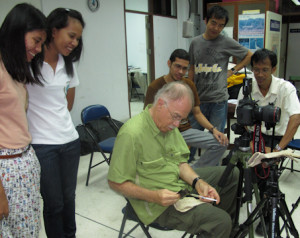
On our first day in Hat Yai, after a 20-minute drive from our hotel, we arrived at the Prince of Songkla University (PSU) with Sara and Pushpa. We were given a large lab room in which to set up our photography studio while Pushpa, Pipat and others went mist netting for nectar bats for us to photograph. They returned with two Dawn Bats (Eonycteris spelaea) which were hand-fed by Pushpa and released into the studio for the night.
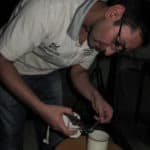
After midnight, finding a tuk tuk (auto taxi) on campus to get to our hotel was not possible. Pushpa found a motorbike taxi, and Merlin got on with the driver, while I got on Pushpa’s bike. At 2 o’clock in the morning, we had the roads to ourselves.
Logistically, it was difficult to work so far from the bats, so we were offered guest housing on the PSU campus for the rest of our stay. We are grateful to Tuenjit Sritongchuay (a.k.a. Fon), a Ph.D. student, for coming up with the suggestion and personally making all the arrangements. Except when we got locked into the building where we were working or got lost, wandering around the campus at 3 a.m., it worked out really well!

In the evenings, soon after sundown, we searched for flowers with limited success. We were most interested in photographing bats pollinating Parkia flowers to show the economic value of bats as essential pollinators of the petai or stink bean crop obtained from this plant. It was the end of their flowering season, so they were neither easy to find nor to reach. Pushpa climbed a tree and used a long-handled pruner and carefully lowered the light-bulb shaped flowers down to Merlin and Fon below.
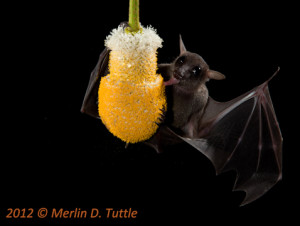
One night, we went to the mangroves with Sara and two students from Bhutan to search for flowers from the tree Sonneratia ovata. Unfortunately, they weren’t flowering.
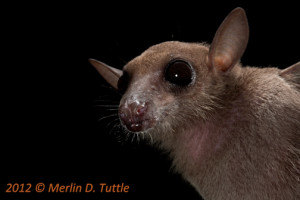
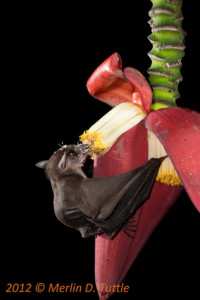
We needed to keep our bats working, coming to flowers, so Sara brought us flowering stalks of wild bananas. On a previous trip to Thailand, Merlin had taken an excellent photo of a bat pollinating wild banana all covered in pollen, but why not try to improve?
In total, we photographed 22 genera and 32 bat species, a wonderfully successful trip, thanks to many outstanding helpers.
Love our content? Support us by sharing it!
Bats are among the most fascinating yet misunderstood creatures in the natural world, and for many conservationists, a single experience can ignite a lifelong passion
Merlin and MTBC team members spent 19 days in Costa Rica last November on a filming trip for “Bat City” with its Director and Emmy
Bats can use sounds in many complex ways. They can sing and even have different dialects… When imagining a bat, the first thoughts that come
Thanks to all the Join the Nightlife: Bats and Agriculture attendees who joined us out in the field this year! Guests got hands-on experience with
2024 © Merlin Tuttle’s Bat Conservation. All rights reserved.
Madelline Mathis has a degree in environmental studies from Rollins College and a passion for wildlife conservation. She is an outstanding nature photographer who has worked extensively with Merlin and other MTBC staff studying and photographing bats in Mozambique, Cuba, Costa Rica, and Texas. Following college graduation, she was employed as an environmental specialist for the Florida Department of Environmental Protection. She subsequently founded the Florida chapter of the International DarkSky Association and currently serves on the board of DarkSky Texas. She also serves on the board of Houston Wilderness and was appointed to the Austin Water Resource Community Planning Task Force.
Michael Lazari Karapetian has over twenty years of investment management experience. He has a degree in business management, is a certified NBA agent, and gained early experience as a money manager for the Bank of America where he established model portfolios for high-net-worth clients. In 2003 he founded Lazari Capital Management, Inc. and Lazari Asset Management, Inc. He is President and CIO of both and manages over a half a billion in assets. In his personal time he champions philanthropic causes. He serves on the board of Moravian College and has a strong affinity for wildlife, both funding and volunteering on behalf of endangered species.